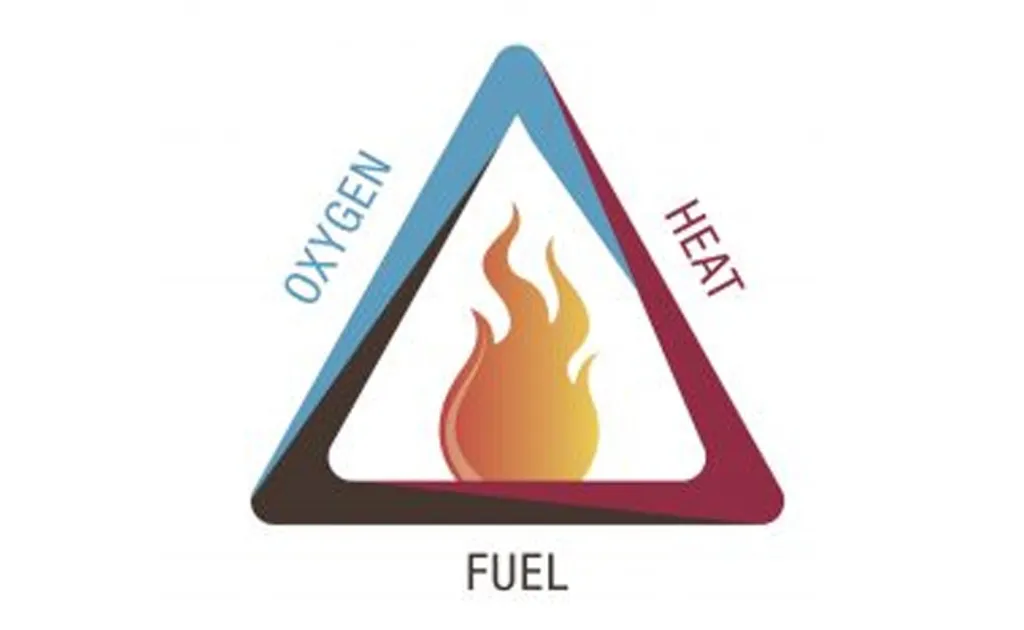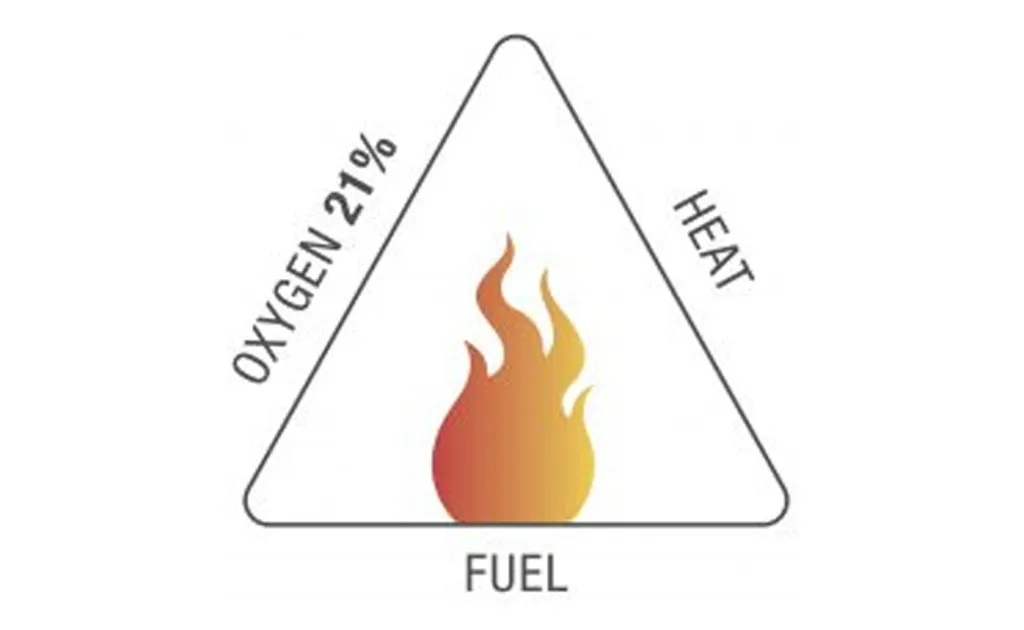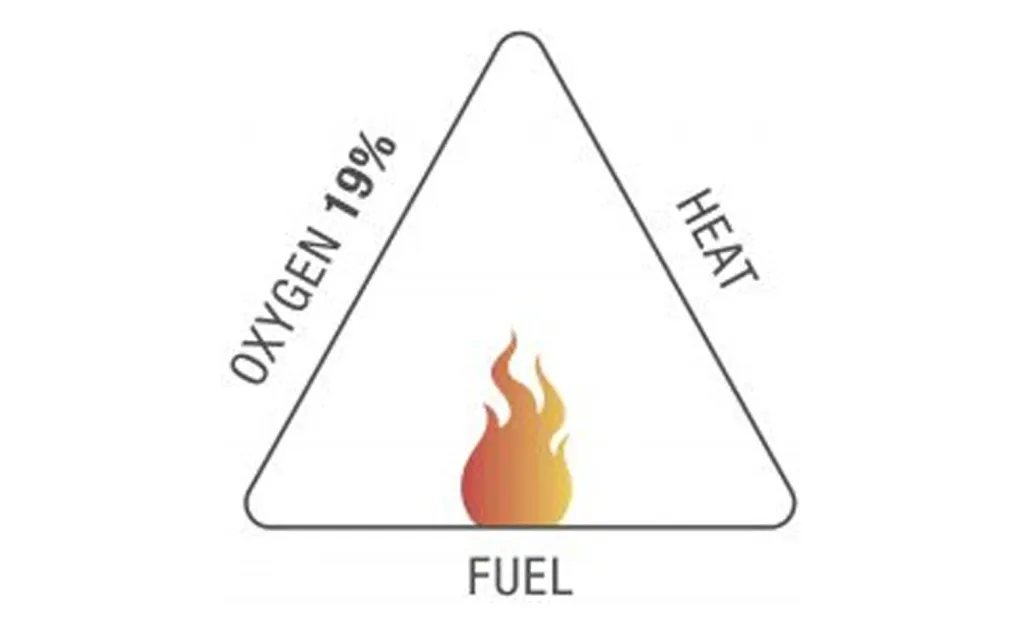OXYGEN REDUCTION SYSTEM
CONCEPT
Heat, combustibles, and an oxidizing agent, generally oxygen, are required for a fire to ignite. The idea behind the fire triangle.
A natural fire will occur when these ingredients are present and in the proper combination. By eliminating any of these ingredients, a fire can be averted or extinguished. Once a fire begins, the exothermic chain reaction supports it and permits it to continue until or unless at least one of the fire’s ingredients is blocked.
Traditional firefighting tactics either deny the burning fire the oxygen it requires, drop the temperature of the fuel below the ignition point, or create a barrier of inert gases, therefore addressing the chemical process responsible for the fire.




HERE'S HOW A CARBON DIOXIDE FIRE EXTINGUISHER SYSTEM TYPICALLY WORKS:
OPERATING PRINCIPLE
GENERATE
This step entails the creation of an oxygen-depleted atmosphere. All of Eurosafe’s solutions for creating this atmosphere are pure green systems: they utilize just air from the surrounding environment, with no chemical chemicals or additions added.
RELEASE
The atmosphere created is released into the area to be protected using a distribution network.
MONITOR
A number of oxygen sensors analyze all of the protected area and communicate the findings to the control panel using a specific method known as a “virtual grid,” ensuring that the atmosphere is continually studied and monitored.
MAINTAIN
When an oxygen value other than the appropriate level is detected, the control panel activates the oxygen-reduced atmosphere generators for the time necessary to restore the defined values.
The system is able to optimize energy consumption and operating costs thanks to the virtual grid and the rotation system, which is made possible by the modularity of the generators: in fact, the equipment alternates cyclically, limiting the hours of operation and reducing wear and maintenance.
FEATURES AND SPECIFICATIONS
- Provide a safe and breathable oxygen environment
- Patented and proven technology
- Very small footprint
- Plug and use
- Multiple hazards can be protected with just one system
- Generators require very little maintenance – a cycle of 6 months is typical
- No nitrogen injection, so safer than other systems
- No extensive piping
- No pressurized cylinders, no leaking
- No false discharge and no discharge failures
- Designed, engineered, and manufactured to customer requirements and specifications
- Easily installed into existing premises as well as in newly built spaces
- Can fit any application ranging from self-contained units for smaller volumes to vast systems for large buildings, protecting single or multiple rooms and compartments
- Can be used as an alternative, but also as a complementary or supplementary option that enhances conventional fire safety without interfering with performance
- NFPA Compliance
TYPE SYSTEM

FIRE SAFETY ADVANTAGES WITH EUROSAFE® SYSTEMS
- Certainty of avoiding the outbreak and spread of fire
- Retaining access to protected areas at any time
- Proactive and permanent fire protection to secure business processes and valuable goods
- Protecting multiple hazards with just one system
- Fire protection without any interruption – no refilling or replacement needed
- Absolute safety for human beings through using breathable air – no nitrogen injection
- Environmentally friendly – no chemicals used
- Easy to install and maintain
- Very small footprint and little building space needed
- Scalable to any size of protected areas and number of protected compartments
- No design limitations
- No damages by fire, released water, foam or other extinguishing agents
- No excessive piping, no nozzles, no pressurized cylinders, no leaking
- No false discharges, no discharge failures, no loss of work time, no interruptions of working processes, no consequential costs
- No disruption of working processes, no consequential costs, no closing of unusable areas due to fire damages, clean-up or repair
APPLICATION SCOPE
Data center fire protection
Museums Protection
Archives Fire Protection
Substation Fire Prevention
Warehouse Fire Protection
Tunnel Fire Prevention
Aerospace Fire Prevention
Tall Buildings’ Fire Protection
Mining Fire Prevention
Nuclear Facilities Fire Prevention
HEALTH AND SAFETY
EUROSAFE OXYGEN REDUCTION SYSTEM® provides complete environmental protection for your premises. When we talk about the air we breathe, we frequently and incorrectly refer to oxygen. In actuality, the air we breathe contains 78.08 percent nitrogen and just 20.95 percent oxygen (0.93 percent Argon and 0.04 percent CO2). This nitrogen-to-oxygen ratio is the same all around the earth, whether high in the mountains or low at sea. The oxygen provided by nature is the fuel that every fire need to burn. EUROSAFE Oxygen Reduction System® denies the fire adequate “food” by adjusting the atmosphere and changing the ratios between these two elements. The altered ratio has the same impact on humans as staying at high altitudes or flying because the reduced air pressure pulls the molecules apart and the amount of oxygen breathed with each breath is smaller than in lower atmospheres.